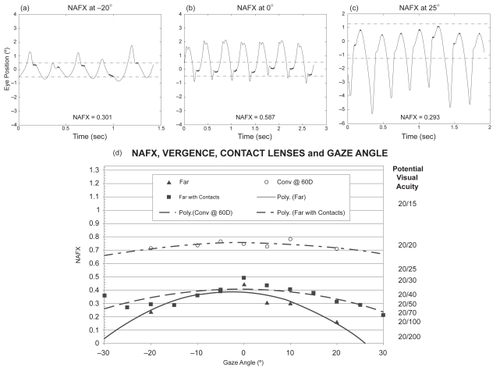Figures & data
Figure 1 Fixation data (eye position vs. time) for the subject during far viewing with contact lenses at different gaze positions: −20° (a), 0° (b) and 25° (c). The corresponding NAFX values are also shown. Foveation periods were automatically thickened by the NAFX algorithm. The area between the dash-dotted lines represents the foveation position window used to calculate the NAFX. In (d), plots of NAFX vs. gaze angles for far viewing, far viewing with contact lenses, and while converged (60 PD). Fitted polynomial curves are shown. NAFX-correlated potential visual acuities are adjusted for the subject’s age. Positive gaze angles indicate rightward gaze and “Conv” is convergence.
